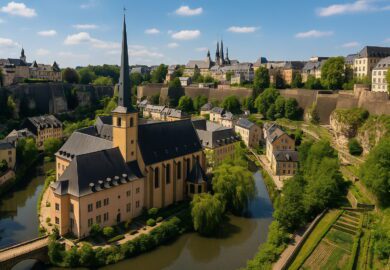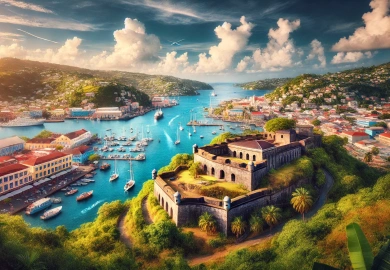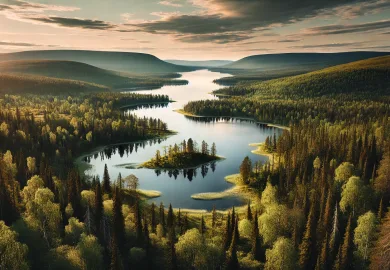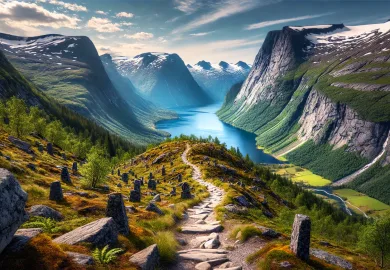
Spain, with its rich history, diverse landscapes, and vibrant culture, is a top destination for summer travel. From the sunny beaches of the Mediterranean coast to the historic cities steeped in culture, Spain offers an array of experiences that cater to every type of traveler. In this guide, we’ll explore the best cities to visit in summer in Spain, each offering its unique charm and attractions. Whether you’re looking to bask in the sun, delve into history, or indulge in world-class cuisine, these cities should be at the top of your travel list.
Discover the Magic of Barcelona: A Blend of Beach and Culture
Barcelona, the capital of Catalonia, is one of Spain’s most beloved cities, especially during the summer. Known for its stunning architecture, vibrant nightlife, and beautiful beaches, Barcelona seamlessly blends culture with relaxation. The city’s most famous landmark, the Sagrada Familia, is a must-visit. This basilica, designed by the renowned architect Antoni Gaudí, is an architectural marvel that has been under construction for over a century.
In the summer, Barcelona’s beaches are bustling with activity. Barceloneta Beach, located near the city center, is the perfect spot to soak up the sun, swim in the Mediterranean, or enjoy a refreshing drink at one of the many beach bars. For a more tranquil beach experience, head to Bogatell Beach, which is less crowded and offers a more relaxed atmosphere.
The city’s cultural scene is equally impressive. The Gothic Quarter, with its narrow, winding streets and historic buildings, transports visitors back in time. Here, you can explore the Barcelona Cathedral, visit the Picasso Museum, or simply enjoy a coffee in one of the many charming plazas. In the evening, Barcelona comes alive with music and dance, particularly in the areas around Las Ramblas and El Born.
Experience the Grandeur of Madrid: Spain’s Vibrant Capital
Madrid, the capital of Spain, is a city that never fails to impress. Known for its grand boulevards, beautiful parks, and world-class museums, Madrid is a city that combines history, culture, and modernity. In the summer, the city’s outdoor spaces and lively atmosphere make it a fantastic destination for travelers.
One of Madrid’s most famous attractions is the Royal Palace, a stunning example of Baroque architecture. Visitors can tour the palace and its gardens, learning about the history of the Spanish monarchy. Nearby, the Almudena Cathedral offers breathtaking views of the city from its rooftop.
Madrid is also home to some of the world’s finest art museums. The Prado Museum, which houses works by Goya, Velázquez, and other Spanish masters, is a must-see for art lovers. The Reina Sofia Museum, home to Picasso’s famous “Guernica,” offers a deep dive into modern art. For a more relaxed experience, visit Retiro Park, where you can rent a rowboat on the lake, stroll through the rose garden, or simply relax in the shade of the trees.
In the evenings, Madrid’s energy is palpable. The city’s tapas bars, particularly in neighborhoods like La Latina and Malasaña, are the perfect place to sample traditional Spanish cuisine and enjoy a glass of wine or a refreshing sangria. For a unique experience, visit one of Madrid’s flamenco shows, where you can witness this passionate and dramatic art form up close.
Seville: The Heart of Andalusian Culture and Flamenco
Seville, the capital of Andalusia, is a city that embodies the essence of southern Spain. With its warm climate, rich history, and vibrant cultural scene, Seville is a perfect summer destination. The city’s most iconic landmark is the Seville Cathedral, the largest Gothic cathedral in the world. Climb to the top of the Giralda Tower for stunning views of the city, and don’t miss the tomb of Christopher Columbus inside the cathedral.
Another must-see in Seville is the Real Alcázar, a royal palace that showcases the city’s Moorish influence. The palace’s intricate tile work, lush gardens, and stunning architecture make it one of Spain’s most beautiful sites. The Alcázar is also a UNESCO World Heritage site and has been featured in several films and TV shows, including “Game of Thrones.”
Seville is also famous for its vibrant flamenco scene. The Triana neighborhood, in particular, is known for its flamenco bars, where you can enjoy live performances of this passionate dance. In the summer, the city’s streets come alive with festivals and outdoor events, including the famous Feria de Abril, a week-long celebration of Andalusian culture.
For a taste of local cuisine, head to one of Seville’s traditional tapas bars. Dishes like gazpacho, salmorejo, and jamón ibérico are local favorites that should not be missed. To cool off from the summer heat, take a leisurely stroll along the Guadalquivir River or visit the beautiful Plaza de España, an architectural marvel surrounded by lush gardens and a scenic canal.
Valencia: A Perfect Blend of Tradition and Modernity
Valencia, located on Spain’s eastern coast, is a city that perfectly blends tradition with modernity. Known for its futuristic architecture, historic sites, and beautiful beaches, Valencia is an ideal summer destination. The City of Arts and Sciences, a massive complex that includes a science museum, an opera house, and an aquarium, is one of Valencia’s most famous landmarks. This architectural masterpiece is a must-visit for anyone interested in science, art, or design.
Valencia is also the birthplace of paella, Spain’s most famous dish. To experience this culinary delight, visit one of the city’s many beachfront restaurants, where you can enjoy a traditional paella made with fresh seafood and local ingredients. The Malvarrosa Beach, located near the city center, is the perfect place to relax after a meal, with its golden sands and clear waters providing a perfect backdrop for a summer day.
The historic center of Valencia is another highlight. The Valencia Cathedral, which is said to house the Holy Grail, is a beautiful example of Gothic architecture. Climb to the top of the Miguelete Tower for panoramic views of the city. Nearby, the Central Market is a vibrant hub of activity, where you can sample local produce, meats, and cheeses.
Valencia’s summer festivals are also a major draw. The Fallas festival, held in March, is one of Spain’s most famous events, featuring giant sculptures, fireworks, and parades. In the summer, the city hosts the July Fair, a month-long celebration with concerts, bullfights, and a spectacular fireworks display.
In conclusion, Spain offers a diverse array of cities to explore during the summer, each with its unique charm and attractions. Whether you’re drawn to the cultural richness of Barcelona, the grandeur of Madrid, the passionate spirit of Seville, or the modern vibrancy of Valencia, you’re sure to find something that captivates your heart. So pack your bags, embrace the Spanish summer, and get ready for an unforgettable adventure.








